
https://academic-oup-com.proxy.lib.pdx.edu/book/41441
- Subject:
- History
- History, Law, Politics
- Political Science
- Social Science
- Material Type:
- Teaching/Learning Strategy
- Author:
- Lindsay Benstead
- Date Added:
- 07/07/2023

https://academic-oup-com.proxy.lib.pdx.edu/book/41441

Review of Boundless World History: https://courses.lumenlearning.com/boundless-worldhistory/
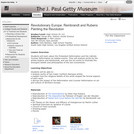
Students will learn about the Protestant Reformation and the Catholic Counter Reformation as related events. They will analyze works by the artists Rubens and Rembrandt, and use the artworks to illustrate the divergent beliefs and philosophies of the two movements.
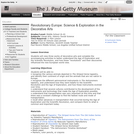
Students will view three works of decorative arts and complete the accompanying activities to better understand the Age of Exploration and the Scientific Revolution, and how these "revolutions" and their discoveries influenced the new European world view.

This inquiry leads students through an investigation of the Roman roads. Resource created by Nichole Flynn, Ainsworth Community Schools, as part of the Nebraska ESUCC Social Studies Special Projects 2023 - Inquiry Design Model (IDM).

This course is an an exploration of British culture and politics, focusing on the changing role of the monarchy from the accession of the House of Hanover (later Windsor) in 1714 to the present. The dynasty has encountered a series of crises, in which the personal and the political have been inextricably combined: for example, George III’s mental illness; the scandalous behavior of his son, George IV; Victoria’s withdrawal from public life after the death of Prince Albert; the abdication of Edward VIII; and the public antagonism sparked by sympathy for Diana, Princess of Wales.

Overview: Royal History is an educational hub. We'll study British history, starting with the monarchy and moving forward to the twenty-first century.
From the monarch, we shall expand to include every century's hero and villain. in addition to each and every decade's worth of imperial and political scandals.
We intend to build our centre gradually over a number of years, beginning with the fourth cemetery.
We will also study each nation in turn as we investigate world history.
Additional: We will also examine international history by taking a turn researching each nation.
Attribution link: Royalhistory.site
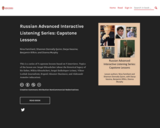
Short Description:
This is a series of 5 capstone lessons based on 5 interviews. Topics of the lesson are: Sergei Khrushchev (about the historical legacy of his father, Nikita Khrushchev), Sergei Enikolopov (crime), Viktor Loshak (journalism), Evgenii Aksenov (business), and Aleksandr Asmolov (education).
Long Description:
This is a series of 5 capstone lessons based on 5 interviews. Topics of the lesson are: Sergei Khrushchev (about the historical legacy of his father, Nikita Khrushchev), Sergei Enikolopov (crime), Viktor Loshak (journalism), Evgenii Aksenov (business), and Aleksandr Asmolov (education).
Authors: Nina Familiant, Shannon Donnally Quinn, Benjamin Rifkin
New version created by: Shannon Donnally Quinn with help from Lidia Gault
Word Count: 4544
(Note: This resource's metadata has been created automatically by reformatting and/or combining the information that the author initially provided as part of a bulk import process.)
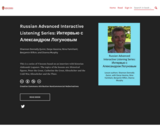
Short Description:
This is a series of 5 lessons based on an interview with historian Aleksandr Logunov. The topics of the lessons are: Historical figures, Peter the Great, Catherine the Great, Khrushchev and the Cold War, Khrushchev and the Thaw.
Long Description:
This is a series of 5 lessons based on an interview with historian Aleksandr Logunov. The topics of the lessons are: Historical figures, Peter the Great, Catherine the Great, Khrushchev and the Cold War, Khrushchev and the Thaw.
Authors: Shannon Donnally Quinn, Darya Vassina, Nina Familiant, Benjamin Rifkin, Dianna Murphy
New version created by: Shannon Donnally Quinn and Isabella Palange with help from Lidia Gault
Word Count: 13700
(Note: This resource's metadata has been created automatically by reformatting and/or combining the information that the author initially provided as part of a bulk import process.)

Short Description:
This is a series of 9 lessons based on films "Solovky Power" and "The Children of Ivan Kuzmich" and interviews by filmmaker Marina Goldovskaya. Topics of the lessons are: The director of the films, About the camp, Heroes, Life in the camp and after, About the film Solovky Power, The country and Stalinism, School 110, Parents and children, Adult life.
Long Description:
This is a series of 9 lessons based on films “Solovky Power” and “The Children of Ivan Kuzmich” and interviews by filmmaker Marina Goldovskaya. Topics of the lessons are: The director of the films, About the camp, Heroes, Life in the camp and after, About the film Solovky Power, The country and Stalinism, School 110, Parents and children, Adult life.
Authors: Victoria Thorstensson, Shannon Donnally Quinn, Benjamin Rifkin, Dianna Murphy
New version created by: Shannon Donnally Quinn and Isabella Palange with help from Lidia Gault
Use of excerpts from the films Solovky Power and Children of Ivan Kuzmich in the RAILS lessons is courtesy of Goldfilms.
Word Count: 17139
(Note: This resource's metadata has been created automatically by reformatting and/or combining the information that the author initially provided as part of a bulk import process.)
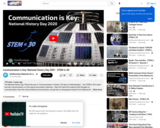
Learn how key communication is in the space and aviation industries. Hear first hand from experts their thoughts on communication and learn the science behind communication.
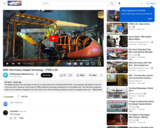
Because of the events of WWI, airplane technology developed rapidly. Learn how airplanes changed in this short time, how other technology advanced, and how airplanes were used throughout WWI.
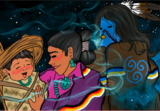
Sacred Breath is a Middle School curricular program created by EarthGen. For this unit, we offer professional development training and assistance with implementation. If you are interested in implementing this program at your school or district, please let us know! Please contact info@earthgenwa.org for more information.
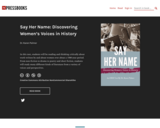
In this text, students will be reading and thinking critically about work written by and about women over about a 1500 year period. From non-fiction to drama to poetry and short fiction, students will study many different kinds of literature from a variety of voices and perspectives.

This course provides an introduction to writing about science (including medicine, technology, and engineering) for general readers. With a strong emphasis in background research, this course will help students build a foundation for strong science writing. Students will read works by accomplished science writers. Each assignment will focus on a different popular form, such as news articles, interviews, essays, and short features.
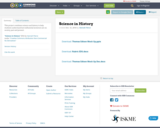
This project combines science and history to help students understand how influential inventors are on society, past and present.
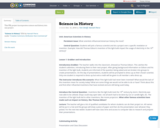
This PBL project incorporates science and history into one project.
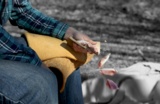
Explore the physics and material science of making stone tools. Educator Nate Salzman walks us through the surprisingly complex science of flintknapping, or the process of turning stone into blades, arrowheads, spear points, axes, jewelry and more. Making tools from stone may be thousands of years old, but required people to think about the properties of the material they were using and the physics of striking the stone to shape it just right.
Consider using this resource to support classroom learning about the relationship between microscopic and macroscopic properties and how forces are transmitted. Animations derived from this video have been published separately as "Animations - The Science of Knapping."
This resource is part of Jefferson Patterson Park and Museum’s open educational resources project to provide history, ecology, archaeology, and conservation resources related to our 560 acre public park. More of our content can be found on YouTube and SketchFab. JPPM is a part of the Maryland Historical Trust under the Maryland Department of Planning.

This course examines the role of science and medicine in the origins and evolution of concepts of race, sex, and gender from the 17th century to the present. We analyze biological, medical, and anthropological studies and how they intersect with historical, social, political, and cultural ideas about racial, sexual, and gender differences. The course follows lecture/discussion format.
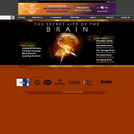
This site presents a history of efforts to understand the brain, a three-dimensional tour of the brain, optical illusions, and an animation showing how magnetic resonance imaging (MRI) works. Video clips examine how the brain evolves and differs from infancy to childhood, adolescence, and through adulthood.